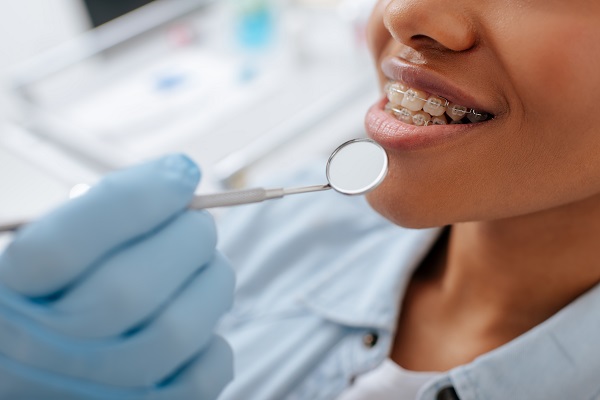Differences between a Dentist and an Orthodontist

Many people do not know the difference between a dentist and an orthodontist. The confusion is understandable especially because both work on teeth. But it is beneficial to know how to tell the difference between them. When you have a problem with your teeth, jaws or gums, it is important that you schedule an appointment with the right professional.
Dentists vs. orthodontists
Dentists and orthodontists are both involved in the care of teeth and can help solve dental problems. Both of them are dental school graduates. Dentists can even offer some orthodontic services. However, there are differences between the professions.
Education
Dentists, who are also known as general or family dentists focus on overall oral health. All practicing dentists have earned either a DMD (doctor of dental medicine) or DDS (doctor of dental surgery) degree from an accredited program. Dentists are required to pass clinical and written exams. Most programs require applicants to have at least a bachelor’s degree.
Orthodontists complete the four years of general dental education in dental school. The professionals then have to complete an accredited program for a minimum of two years. These additional years make them qualified to move the teeth and align jaws. The title ‘orthodontist’ denotes the area of specialization.
Scope of practice
General dentists have to be licensed to practice dentistry. In some states, dentists can also provide specialty care. This happens even though they do not have post-dental school training in an orthodontic residency program. For instance, a dentist may provide the same services as endodontists who have training in root canals, but this does not mean that a dentist is an endodontist. Dentists may also provide aligners or braces to move teeth, but this does not also mean that dentists are orthodontists. In most cases, orthodontists focus only on their dental specialty.
Services
A dentist focuses on overall oral health. Dentists diagnose and treat problems with teeth, gums and other parts of the mouth. Through regular checkups, dentists can detect and treat cavities and diseases. Dentists also provide services such as veneers or crowns to improve the function and appearance of teeth. These treatment options are ideal for teeth that are broken or chipped or that have extensive decay.
Orthodontists are concerned with the examination, diagnosis and treatment of anomalies and malocclusions. Malocclusions may result from missing, crowded or extra teeth or jaws that are not aligned. An orthodontist can straighten the teeth. This can be achieved by moving them through the bone using braces, wires or bands. Orthodontists also help adults and children who want to improve their bite or appearance.
Takeaways
Both dentists and orthodontists work on teeth and help patients deal with problems that affect the teeth, gums and jaws. One major difference between them is education. Both graduate from dental school, but orthodontists must complete further training. The differences should help you determine who to see in case of any dental problems. If you are thinking about orthodontic treatment, you should consider your orthodontist.
Request an appointment here: http://www.pricefamilyortho.com or call Price Family Orthodontics at (972) 528-5519 for an appointment in our Frisco office.
Check out what others are saying about our services on Yelp: Orthodontist in Frisco, TX.
Related Posts
Trying to find an orthodontist can be a long process, but there are certain points patients can look for to make the search easier. While it is up to individual patients to decide what qualities matter most, it can help to keep several aspects of an orthodontic office in mind to help narrow down choices.…
Teeth straightening can do more than simply enhance the appearance of one's smile. Straighter teeth are easier to clean, helping patients maintain their oral health in the process. Crowded or severely crooked teeth are more difficult to clean, which can lead to cavities. Thankfully, an orthodontist can help patients straighten their teeth in various ways…
Moving to a new city can be an exciting adventure but also a stressful and overwhelming experience. One of the challenges of moving to a new city is finding a new orthodontist for yourself or your family, whether for first-time or continued treatment. Depending on the size of the new community, there may be a…
Finding an orthodontist in your city can be daunting, especially if you are unfamiliar with the area or have never needed orthodontic treatment. Orthodontic treatments are a significant investment in oral health and overall well-being, so choosing an experienced, knowledgeable, and trustworthy orthodontist is important. This article will share tips and strategies to help you…
